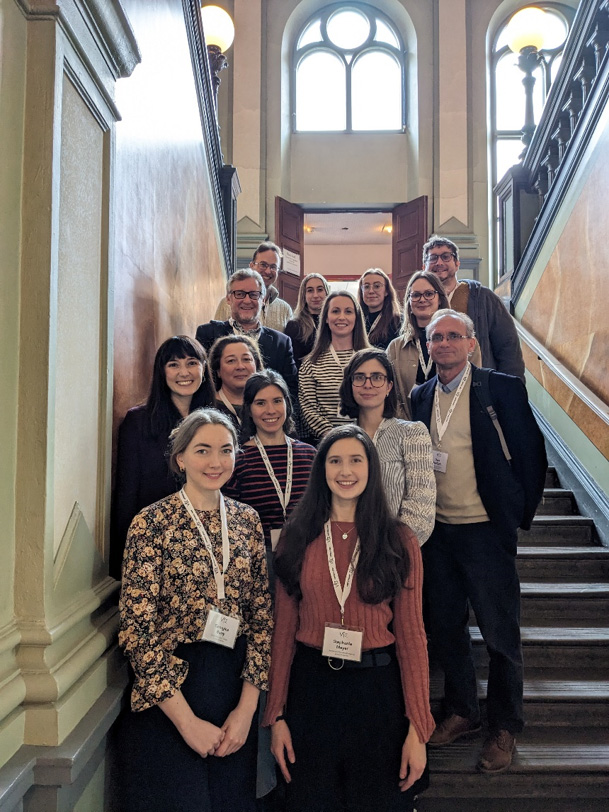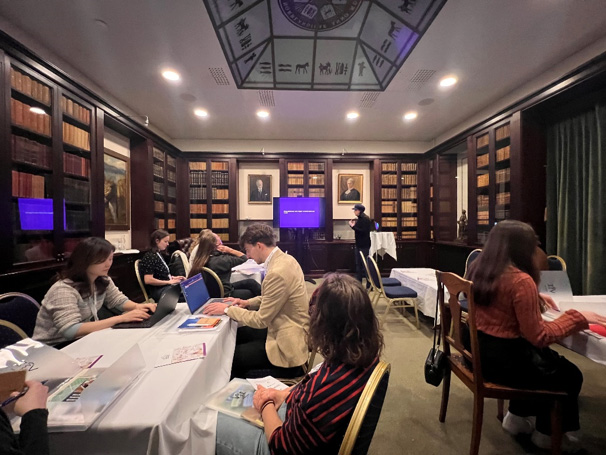Sharing knowledge on risk analysis, modelling and epidemiology at the SVEPM 2024 conference
The WOAH Collaborating Centre for Risk Analysis and Modelling is committed to disseminating data and providing scientific and technical training in this scientific field to WOAH Member Countries.
As part of this mandate, representatives from the Animal and Plant Health Agency (APHA) and the Royal Veterinary College (RVC) attended the Society for Veterinary Epidemiology and Preventive Medicine (SVEPM) 2024 conference in Uppsala, Sweden in March to share recent data through scientific presentations and to host a training workshop on modelling and risk mapping.
The 3-day conference was well-attended, bringing together veterinary epidemiologists and public health professionals from around the world. In addition to having a strong representation amongst the delegates, the Collaborating Centre representatives from APHA and RVC were involved in a number of the oral and poster presentations.
In the ‘Intervention Evaluation’ session, Beth Savagar, gave an oral presentation entitled ‘Modelling the impact of heterogeneity in small ruminant populations on peste des petits ruminants virus (PPRV) transmission and the effectiveness of vaccination for eradication’. Beth reported on the estimated effectiveness of a range of vaccination strategies for PPRV based on modelling of transmission in a number of scenarios. The presentation provoked some interesting discussion and was well received by the delegates.
The standard of posters is always exceedingly high at SVEPM, and this year was no exception. The Collaborating Centre contributed a number of posters, including presentations of work on surveillance of avian influenza, echinococcus multilocularis and transmissible spongiform encephalopathy. Other posters presented by researchers from the Collaborating Centre evaluated effective biosecurity for salmonella and from companion animal epidemiology, work was presented on novel causal inference studies within VetCompass, the Veterinary Companion Animal Surveillance System.

During the conference, Dr Kim Stevens, also led a morning workshop on ‘Ecological niche modelling and risk mapping with Maxent’.
The workshop was designed to cater to participants of varying levels of expertise, from seasoned epidemiologists to recent graduates entering the field, all eager to deepen their understanding of disease control through innovative modelling techniques. Planned and facilitated by Dr Kim Stevens (Associate Professor in Spatial Epidemiology and Applied Statistics) from the Royal Veterinary College, London, the workshop's primary goal was to equip delegates with the knowledge and tools necessary to engage in ecological niche modelling and risk mapping – fundamental skills for understanding and combating the spread of infectious and vector-borne diseases. Through a series of structured sessions, attendees were introduced to the conceptual framework of spatial modelling and risk mapping, some of the novel methodologies available including ecological niche modelling, and the specific inputs these methods require and the interpretation of the outputs.

The practical hands-on ecological niche modelling exercise using Maxent software allowed participants to apply the theories and techniques they had learned directly, to create models and generate risk maps for disease pathogens and vectors. This exercise was particularly appreciated as it provided a real-world application of the concepts discussed, fostering a deeper understanding and retention of the material.
The workshop attracted a broad range of delegates, whose diverse backgrounds and experience enriched the workshop significantly. This variety fostered an environment of learning and exchange where more experienced professionals shared insights with those newer to the field, and vice versa. Group activities further encouraged this exchange, allowing for extensive networking opportunities and the cultivation of new professional relationships. This setup was especially beneficial for less experienced attendees, who gained insights and guidance from their more seasoned peers.
The ability to directly engage in creating ecological niche models provided a tangible skill that participants could take back to their respective fields, enhancing their professional capabilities in disease surveillance and risk management. A number of delegates bought their own data to which they were able to apply their new-found knowledge. This allowed them to immediately apply the newly acquired techniques to their data, seeing real-time results and gaining instant feedback on their applications.
Feedback from the workshop was overwhelmingly positive. Attendees particularly appreciated the hands-on component and the chance to work with their data, which made the theoretical aspects of the workshop much more tangible and immediately applicable.
We were pleased to support the continuing commitment of the SVEPM conference to advance the field of veterinary epidemiology and preventive medicine through practical, impactful education.
The next conference, SVEPM 2025, will be hosted in Berlin, Germany on 26-28 March 2025. See https://svepm.org.uk/conferences/ for further information.
Please email RAM.WOAHCollaboratingCentre@apha.gov.uk with any enquiries.



